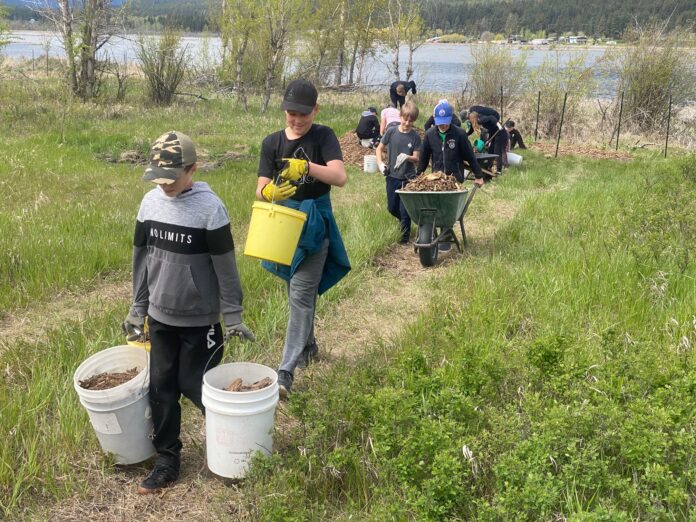Cranbrook students helped out conservation efforts in the Elizabeth Lake area while getting hands-on education about the local ecosystem.
Wildsight officials said the area serves as an important nesting and staging ground for several types of birds, and provides a habitat for Western Painted Turtles and other wildlife.
A grade 6 class from TM Roberts Elementary School showed up to help out and learn.
“This was to get the kids out there to put in a bit of work to appreciate water and increase the community appreciation of water, increase water quality and use water smarter,” said Dave Quinn, Know Your Watershed program coordinator. “This was a really cool opportunity. It was the Rocky Mountain Naturalists and Keefer Ecological Services along with the City of Cranbrook coming up with a plan to restore Elizabeth Lake.”
Wildsight officials said 18 students helped plant nearly 50 native shrubs near the wetland edge and covered them in mulch. This helps suppress weed growth and retains water longer on hot summer days.
“The work is being done to replace the dense mat of weeds that has taken over around much of the wetland, a former sawmill log float, industrial site, and dump,” said Quinn. “It had a challenging history, but it’s an incredibly diverse wetland.”
Quinn said the indigenous species planted by the students will help the animals that call the wetlands home.
“We were planting red osier dogwood, willow, cottonwood, some wild roses,” said Quinn. “Those are the kinds of things that will eventually grow up and provide a really neat and diverse shrub community that songbirds can nest in, as well as provide cover for other species.”
The students learned at the site as part of the Know Your Watershed program.
“The first thing we try to get all the kids to understand is where their water comes from, where it goes when we’re finished with it, and the nature of water as a shared resource,” said Quinn.




